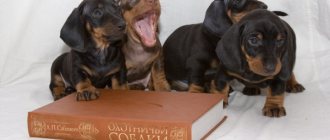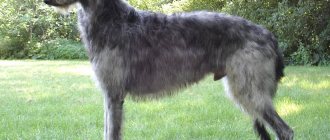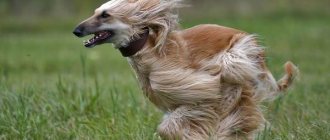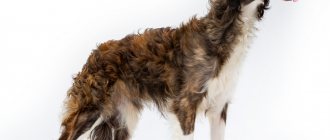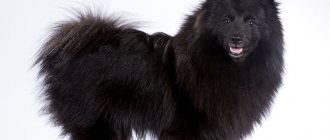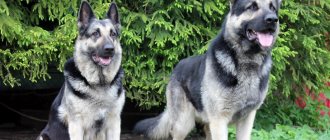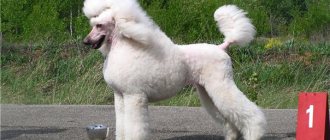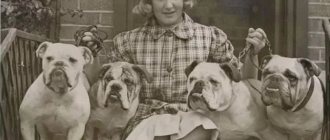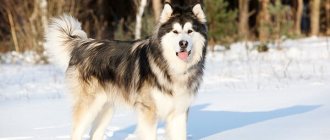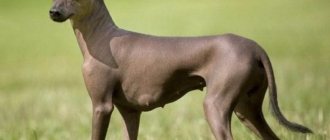Greyhounds are a group of hunting and baiting dog breeds renowned for their speed. Unlike other four-legged hunters, they rely not on smell, but on sight. For this reason, they are not used in dense thickets. There is no need for firearms either, since after finding the prey, the dogs catch and strangle it on their own.
Below you can get acquainted not only with the most popular representatives of the breed, but also with little-known ones. Despite some differences, they all have similar character traits and demeanor.
Breed Features
These dogs are easy to recognize by their appearance. The characteristics of the breed are manifested in characteristics common to all representatives:
- long muscular legs;
- dry and fit body with a streamlined shape;
- narrow, neat head.
Greyhounds have a contradictory character. They are always affectionate and obedient with their owner, but are not always friendly towards strangers. They also do not like to share territory with other pets. It takes them some time to get used to having another pet dog. Greyhounds obey only adults unquestioningly. They may show disobedience or even aggression towards children and adolescents.
Caring for a pet does not require much trouble, but you will have to bathe the dog often. Greyhounds are clean dogs and love water treatments. They need to have their nails trimmed once a week, otherwise they will experience discomfort when running. A greyhound's coat needs to be brushed regularly.
In training, greyhounds often show stubbornness, which can be overcome with the help of rewards. Dogs of this breed need an active pastime. Therefore, it is recommended to walk them at every opportunity. They love walks, jogging, and games. Greyhounds are usually in good health, but they often have stomach problems. The dog's diet should be carefully thought out and balanced.
The greyhound is an ancient hunting dog, its origin history goes back several thousand years. It is known that 4 varieties of this breed were previously bred on the territory of Russia: Hortaya greyhound, chestnut, hound and Krymka. Other researchers highlight their classifications. Modern greyhound breeds are spread all over the world, many of them are still developing and improving.
Brief historical background
The history of the origin of greyhounds, like most ancient dog breeds, is not known for certain. There are several versions on this matter, but none of them has found documentary evidence. According to the most common theory, the first greyhounds appeared in the Nile Valley (North-East Africa), where they helped people drive fast antelopes and other local ungulates. Many rock paintings dating back to 7–5 millennia BC have been found, depicting canines of a similar type. In ancient Egyptian tombs, not only drawings and figurines of such dogs were discovered, but also their mummies, as well as bone remains.
Images of dogs with a strong visual resemblance to modern greyhounds are found in rock paintings
Another version of the development of events attributes the right to breed greyhounds to the peoples of Central and Asia Minor, who used these animals when hunting on horseback in steppe and desert areas. Some researchers believe that greyhounds were no less in demand than hunting birds of prey. Gradually, the method of horse hunting and the dogs themselves migrated to the steppes of the Black Sea and Caspian regions through Iran and Afghanistan, and later to the northern regions of the Caucasus.
During the period of the Gallic wars (III-II centuries BC), the first greyhounds came to the European continent. However, these dogs became widespread throughout Europe only in the 11th-13th centuries during the period of the Crusades of conquest . Hunting with dogs independently catching up and squeezing the animal was extremely popular in subsequent centuries among the nobility and nobility.
There is inaccurate and somewhat vague information about hunting with greyhounds in Russia (European part), dating back to the 11th-12th centuries. More definitive data dates back to the 15th century, at which time dogs came to Rus' from the south (Asia, the Caucasus, etc.).
Azawakh
The Azawakh is an African hound. This dog is a born hunter; it quickly overtakes any game in open areas. Long legs allow her to easily catch up with even a lion. Dog breeders note the ability of this dog to hunt in any weather. They are usually delivered to the hunting site on horseback so that the greyhounds do not get tired ahead of time. In addition to hunting, the Azawakh successfully participates in various sports competitions; the dog's speed reaches 60 km/h. This breed has well-expressed qualities as a territory guard.
The disadvantage of the breed is its aloof, withdrawn character. The Azawakh does not interact well with people, does not get along well with children and is not suitable as a pet.
What is FCI?
To understand what standards exist for different dog breeds, you need to understand what characteristics unite them into the concept of “breed”. This definition refers to a large group of animals, in this case dogs, that have the same type of constitution and exterior that is consistently transmitted from generation to generation and has common roots of origin.
To ensure that dogs have the appearance and qualities that people need, breeds are constantly being improved. This is done by selecting the most promising puppies and breeding dogs with the most pronounced traits characteristic of this type of animal. In Russia, extensive work has long been carried out to preserve existing ones, as well as to create new breeds of service dogs that can bring invaluable help to humans. For example, the following truly Russian national breeds have become: Moscow Watchdog, Black Terrier, etc.
Dogs that belong to the same breed must have many common characteristics, properties and qualities. For this purpose, the so-called dog breed standards were designated. The standard is one of the most important documents determining whether a dog belongs to a specific breed.
All deviations from existing breed standards are divided into shortcomings and vices. The shortcomings do not interfere with the service use and breeding of dogs, since deviations from the standard are insignificant and do not have a negative impact on the genotype of the animal. Significant deviations from the standards are called “disqualifying faults” or “defects”, and serve as grounds for disqualifying the animal from shows and clubs, as well as prohibiting it from breeding or service use.
At the moment, the largest standardizing association is the Fédération Cynologique Internationale (FCI) (French Fédération Cynologique Internationale) - an international association of cynological federations, created for the purpose of developing and protecting cynology and purebred dog breeding. It is located in the city of Thuin, Belgium. The federation includes national cynological federations of 83 countries, including the Russian Cynological Federation (RKF).
Breed
is a group of animals of the same species, obtained through artificial selection and possessing a number of external, internal and behavioral characteristics that are persistently passed on from generation to generation.
Purebred dogs were bred by man to solve a variety of tasks: search and protection, military needs, herding and protecting livestock, for hunting, etc. Many of them were bred simply for beauty. Pedigree dogs differ from outbred dogs, first of all, in the “predictability of the result” - when getting a puppy, a person can quite fully imagine what it will grow out of. Both in appearance - “exterior”, and in character.
Today, most purebred dogs are bred as companions: the “work” of many breeds comes down to participation in exhibitions, sports competitions and competitions.
The first attempts to classify dogs were carried out in ancient times. The ancient Romans, in addition to the dogs described by Aristotle, named many new breeds: Phoenician, Soletine, Egyptian greyhounds, and so on. In the Middle Ages, the number of breeds continuously increased, especially during the Renaissance. The aristocracy was mainly involved in dog breeding, so most of the breeds known at that time were hunting ones. The same were the early classifications of dogs: hunting and all others.
Today there are about 400 dog breeds in the world. Conventionally, they can be divided into three large subgroups: service (including sports), hunting and decorative. This division is very arbitrary and modern cynology offers options for more detailed classifications of dog breeds. The most famous of them are the classifications of the English Keppel Club, the American Kenisle Club (AKC) and the classification of the International Canine Federation (FCI). The English and American systems operate only within the framework of their respective organizations. A more complete and scientifically based classification of dog breeds has been developed by the FCI. This classification is accepted in all countries that are part of the Federation, including Russia, a member of the FCI. Let's try to briefly characterize each group of breeds.
Galgo
The Spanish Galgo is one of the ancient breeds of greyhounds, distinguished by its aristocratic beauty and leanness. These dogs are most often black and white in color. Used for hunting small game. Thanks to its subtle sense of smell and excellent sense of smell, the dog never loses the track of the pursued animal. The character of the galgo necessarily includes kindness, calmness and tender affection for the owner. Galgo does not like confined spaces. These dogs are not recommended to be kept in an apartment. They need space and independent walks.
Greyhound
Greyhound is an English greyhound. The history of its origin is unknown for certain, but the final formation of the breed occurred in Britain. This is a hunting dog, whose characteristic features are short, smooth hair, a long muzzle and a wide head. The dog's height is 70-75 cm, weight ranges from 25 to 40 kg.
Greyhounds were designed to catch hares and are still good at this task due to their high speed. If necessary, these dogs are able to protect their owners.
The Greyhound does not require special care. You can't bathe him often. Special products may cause inflammation or irritation on thin skin. Once a week you need to trim your pet’s nails and comb its fur.
Deerhound
The Deerhound is a beautiful dog whose homeland is considered to be Scotland. The existing two versions of the origin of this breed date this event to the 16th century. These assumptions are confirmed by drawings depicting similar dogs that decorate various products of ancient peoples. The well-developed hunting instinct, speed and courage of dogs were highly valued and used in deer hunting. The breed standard was officially approved in 1892.
The deerhound has an elongated body, a small head, slender legs, and long hair. The hair on the head is soft, on the rest of the body it is hard. Representatives of this breed are peaceful, loyal to their owner, and friendly with strangers. At the same time, when hunting, they are collected, energetic and dexterous.
Modern representatives
This group of dogs is considered one of the oldest - the appearance of the greyhound dog has been formed over the centuries. Nowadays, the number of such breeds amounts to dozens, and sometimes it seems that they are all alike. But a closer look gives a different picture - each of these lines has its own “zest”.
Let's take a closer look at the representatives of the most popular greyhound breeds.
Azawakh
An Azawakh running after prey resembles a spring in its movements.
The striking thinness of these dogs is striking, which has become their distinctive feature. Brave and somewhat stubborn, they recognize only the owner, adhering to neutrality in relation to the rest of the family.
Important! The character of a puppy largely depends on its parents. The offspring of show-class dogs are more flexible, while the offspring of “working” animals without real hunting will have a hard time.
Sensitive, although they rarely show emotions. The Azawakh also makes a good guard.
Afghan Hound
They have a sharp mind - they master commands on the fly. Excellent assistants in hunting on any terrain: the Afghan line is very hardy and weather conditions are not important for them.
Proud character, rudeness is not forgiven. At a young age they can be stubborn, but with proper training they become the best friends of the family and faithful watchdogs.
Find out more about the Afghan Hound breed.
Bakhmul
Harmoniously built dogs with long, silky hair. Mobility and excitement are combined with kindness and calmness. They rarely speak out and get along well with children. The hunting specialization is driving ungulate game, and the nature of the terrain does not play a role.
Galgo
Real aristocrats with pronounced thinness - the belly is very tucked in, which, coupled with the elongated muzzle, seems to lengthen the dog.
The coat can be either short or medium length. Unlike other greyhounds, such a dog does not hide his devotion to his owner and follows him like a “tail”. And he treats family well too.
Greyhound
The classic greyhound line is an elegant and strong dog for which constant movement is extremely important. They are considered one of the fastest breeds, so the game has little chance of escaping.
Did you know? Britain is considered the homeland of greyhounds - the ancestors of today's greyhounds appeared on the islands back in the 6th century. BC.
They are very inquisitive, although at home they prefer to sit in silence and sleep. They are loyal to their owners, but require early socialization. Training greyhounds is a labor-intensive and time-consuming task, but all costs are compensated when the dog goes out into the field.
Familiarize yourself with the features of caring for an English greyhound dog.
Deerhound
Large animals with strong paws and a powerful body. Medium-length shaggy hair hangs from the body. One of the hardiest breeds with a somewhat contradictory disposition. On the hunt, the Deerhound is a threat to all game, but at home such a pet is the very peaceful one. They are very attached to their owners, patient with the antics of children, and sometimes show affection towards guests.
Irish Wolfhound
The breed received its name for its outstanding size (height at the withers reaches 80-90 cm) and thick coat.
Find out what famous breeds the wolfhound dog is divided into?
In fact, these shaggy good-natured dogs are very friendly and strive in every possible way to emphasize their devotion to the owner and his family.
Training requires endurance - they learn easily, although the dog perceives any load as a game and often improvises. An ideal partner for big game hunting.
Italian Greyhound
Medium in size (maximum 40 cm at the withers), graceful dog with an elongated body.
Learn how to care for and train an Italian greyhound.
Italian Greyhounds are distinguished by their playfulness and subtle sense of tact - they capture the owner’s mood without words, and when necessary, leave him alone.
They get along well with large animals, but they perceive smaller pets as prey.
My favorite activity in nature is chasing a hare.
Important! It is recommended to thoroughly bathe Italian Greyhounds only when absolutely necessary (preferably no more than 2 times a year).
Magyar agar
Magyar Greyhounds are strongly built, with dense short fur.
Excellent guards and hunters, they easily get excited, sometimes forgetting about the sense of self-preservation. They are also good as family dogs (a family is perceived as a pack led by a leader-owner).
They are very attentive and capable of learning, but training is somewhat complicated by their independent nature.
Podenco Ibicenco
They are slender greyhounds with long limbs and a conical muzzle. Due to their short fur, they do not tolerate cold weather well.
They stand out for their intelligence and mobility - it costs nothing for such a pet to escape from the yard. They love to look for all sorts of loopholes and secluded places.
They become attached to people once and for all, and they have a hard time enduring loneliness. The main thing for the owner of such a miracle is not to lose the pet’s trust and to be patient when raising a puppy: the socialization process is quite complicated due to the developed hunting instinct.
Podenco Canario
A lean and hardy short-haired dog, it can go without water for a long time. They are excellent companions, although they are not suitable for protection (canarios are not inherently suspicious or aggressive towards strangers).
Their element is hunting hares and rabbits, and the presence of other dogs will not cause conflict. In “peaceful life” it is better to keep him on a leash: if your hunting instincts kick in during a walk, it will be difficult to catch the nimble beauty.
Polish Hart
Tall (up to 80 cm at the withers) and graceful dogs with powerful paws.
Kind and balanced, they rarely show emotions. An excellent pet for families with older children.
Did you know? The longer a dog's nose, the better the internal organs of the animal are cooled.
They are wary of strangers - guests are greeted by barking (puppies can be scared). Provided there are constant long walks, problems with education do not arise. Favorite objects for pursuit are hares, foxes and game birds like bustards.
Russian greyhound
Large animals with a proportional build.
The body is completely covered with hanging long hair. The Russian Greyhound amazes with its aristocratic appearance.
They are very sociable and adapt well to apartments. They are easy to train and are good neighbors for other pets (with the exception of rodents, in which the dog sees game).
Brave hunters, ready to pursue prey in almost any conditions.
Saluki
Graceful dogs with broom ears. They are smart and balanced. They usually become close to one person, but they also relate well to the owner’s environment. At the same time, Salukis are not very affectionate and are a little capricious.
We advise you to learn more about Saluki dogs.
When dealing with them, you need to show your character gently - these handsome people are very sensitive and do not forgive harsh measures.
Born hunters, when they see game, they forget about everything in the world. Such tendencies require painstaking training and caution during walks.
Slugi
Arabian greyhounds show with all their appearance that this is a four-legged aristocrat. Friendly, although rather reserved. They love to play, but can show character.
Important! Smooth-coated greyhounds tend to have dry skin that is very sensitive to harsh scrubbing and strong shampoos.
Very hardy, can withstand heat and long runs. Usually not prone to aggression, servants immediately go on the attack upon noticing a suitable target.
The established daily routine is extremely important - any changes in the usual rhythm are perceived painfully, so you will have to work on this from the first days of your arrival in the house.
Basins
Graceful dogs with a strong, lean body and well-developed muscles.
Courage and passion are about them. The best pastime for such a pet is an unrestrained pursuit of game (it could be a badger or a hare, a fox or even a wolf). At such moments, he shows anger, which sets Tazy apart from other greyhounds. An ideal assistant for hunting in forests and rough terrain.
At home, he is friendly towards his own people and uncompromising towards strangers - the dog takes security service for granted.
Check out the top 9 ugliest dog breeds in the world.
Taigan
The Kyrgyz mountain hound is harmoniously built and captivates with the mere sight of its woolen curls falling from its legs and belly.
They have very sharp eyesight and enviable health. They are unpretentious in care, which somewhat contrasts with a pronounced sense of self-esteem. This is not a living toy, but a full-fledged companion without a shadow of servility.
They are well trained and are distinctly calm at home. But during the hunt they are transformed - in the excitement of chasing game (from marmot to wild boar), they even forget about their wounds.
Whippet
These are the real intellectuals among greyhounds.
A graceful, almost airy build is complemented by a good-natured disposition. For such a dog, it is important to be close to the owner and know that he is not forgotten.
Did you know? In terms of their intellectual development, adult dogs are comparable to 2-year-old toddlers.
Very sensitive to the atmosphere in the house.
Obedient and easy to train - working with puppies is necessary due to their strong pursuit instinct. It is best demonstrated in hunting small field or feathered game: the dog is not afraid of either water or dirt, and can scurry through swamps for a long time.
It would be interesting to learn more about the peculiarities of keeping a whippet at home.
Pharaoh Hound
The medium-sized “saffron milk caps” also stand apart. Many are captivated by their smile in the form of stretched lips or a funny wrinkled nose.
These cute dogs need a gentle but firm hand: only the owner’s commands are recognized, although the dog will not refuse to play with the children. Socialization is important in relationships with other animals.
They learn commands well, but do not always begin to carry them out - due to their natural intelligence, they first think about the order and find the optimal way to solve the problem (the dog does not tolerate stupid commands).
Hortaya
There are two types within the line:
- southern - with a lighter, dry build and shorter stature;
- northern - with a wider body, heavy bones and large sizes.
These dogs are very freedom-loving and independent. They cannot stand idleness, and their developed intelligence sometimes complicates upbringing.
Important! All greyhounds are susceptible to articular dysplasia to one degree or another. An alarming symptom in this case is a barely noticeable lameness or the dog’s refusal to perform its usual activities.
The owner must control the dog, especially when hunting—horts are very addicted, and in the heat of the chase they can get injured or injure their “colleagues.”
The main targets are fur-bearing animals, foxes and ungulates. Prepared animals can even go after a wolf.
Cirneco del Etna
With prominent, pointed ears, Sicilian Greyhounds are very intelligent and easy-going. They get along with everyone around them, so they are not suitable for the role of a watchman. True, the only other animal that can be tolerated is the company of cats.
The Cirneco dell'Etna is a rare breed of dog.
An active dog is easy to train: even puppies are able to master complex commands (if the training takes place in the form of a game).
Gambling hunters, during a walk they require control - well-developed hunting inclinations can result in troubles both for the spotted animals and for the dog itself.
Irish Wolfhound
The Irish Wolfhound is a true giant among greyhounds. The dog's height reaches 86 cm, and it can weigh up to 55 kg. Representatives of this breed have a long head, a narrowed muzzle, and ears pulled back. The wolfhound's fur is coarse, and has long protected it from thorny bushes and rain. The coat color can be grey, black, white, brindle, red or fawn.
The name of the breed gives away its purpose. But now it is not used for hunting wolves. The Irish Wolfhound currently lives with people only as a companion. Its friendly nature makes it easy for the dog to get along with other pets and children. The wolfhound becomes very attached to its owners, does not like quarrels and scandals in the house, and may be offended by a rude shout.
Despite its enormous size, the Irish Wolfhound is best kept in a house or apartment. The dog will feel lonely in the enclosure. Maintenance is required quite simple. Regular bathing and daily walks, a balanced diet (800 g of food per day) and a place to sleep.
Pekingese
Among the breeds of small fluffy dogs, the Pekingese occupies a special place. Chinese legend says that the breed is the result of a relationship between a lion and a monkey. From its “ancestors” the Pekingese inherited a flexible, lively mind and a very non-standard appearance.
The cuteness of these snub-nosed kids is simply off the charts, but behind such a funny appearance hides a real gentleman with self-esteem. Sometimes this feeling is even slightly exaggerated, so the Pekingese will not tolerate being squeezed and will not rush to do what you told him.
The breed is perfect for apartments with European-quality renovation. A true Pekingese will never allow himself to spoil any of his owner’s property, not because he loves his owner so much and does not want to upset him, but because he has the blood of aristocrats in him and such behavior is completely unacceptable for a noble dog. The aristocrat is indifferent to walks and physical activity.
The Pekingese gets along well with cats, rodents and birds, but cannot stand other dogs. Perhaps the “Napoleon complex” is at play in this little one, so he is aggressive even towards his largest brothers.
Magyar agar
The Magyar Agar is a Hungarian greyhound that is used as a companion, racing and hunting dog. They are distinguished by their endurance and ability to run for a long time over rough terrain. By nature, Magyars are kind and affectionate animals that are unlikely to bite a person. They get along well with all household members, even cats. Representatives of this breed sleep a lot during the day, but this does not mean that they do not need exercise. It is necessary to walk your pet and jog with it.
Origin story
Some researchers express the opinion that greyhounds are one of the first dogs that helped ancient people track and drive prey. However, this judgment has no basis. Just think about it, even during the Ice Age, which ended only 10 thousand years ago, the main prey of man was the mammoth. Hunting this giant animal was extremely profitable, since it was possible to get a large amount of meat from it at once, and a faithful dog would be very useful for hunters.
However, given the size of the mammoth, it can be assumed that it required strength, and not running speed, to drive it, and therefore it makes no sense to look for the ancestors of modern greyhounds in the Stone Age.
That is why it is not possible to determine the exact time and place of the appearance of greyhounds. The only evidence indirectly indicating the domestication of such dogs is considered to be ancient Egyptian images - it can be argued that it was in Ancient Egypt that the first ancestors of these amazing animals appeared. However, some scientists argue that the images of that period are more reminiscent of hounds or Spitz dogs. Most often these were greyhound-like dogs or half-Spitz dogs.
In 1891, the book of the domestic researcher G. Rosen, “Essay on the History of the Greyhound Dog,” was published, where he discussed ancient hunting dogs. The scientist argued that the images dating back to the times of ancient civilizations resemble a rather unusual and strange greyhound - with large erect ears and a tail bent into a ring, which in no way indicates their close relationship with modern representatives of the breed.
In any case, most experts agree that, most likely, real greyhounds could not have appeared before humans tamed horses - hunting on foot as a trade could hardly be effective, and it did not make sense as entertainment. According to available data, horses were domesticated about 5 thousand years ago in Central Asia. 2000 BC e. they spread to Arabia, Egypt and Mesopotamia - that is, to those places where, according to existing data, greyhounds appeared.
Best articles: Poikilothermic animals: examples, features, advantages and disadvantages of ectothermy
It is known that nothing in the world happens by itself - the emergence of any breed of dog was primarily determined by the needs of people, the need for a certain specialization, and was subject to changing external conditions. This is exactly what happened with hunting dogs.
It is also necessary to take into account the fact that in ancient times the lands of the Middle East and North Africa were not deserted. They were distinguished by a favorable climate, rich flora and fauna - lions, as well as rhinoceroses and antelopes were found here. Therefore, there was simply no particular need to use fast dogs for hunting; it was much easier to organize a mass raid or capture prey by ambush.
Centuries passed and under the influence of man the area changed its appearance. Numerous herds devastated pastures, disturbed the surface of the soil, and the resulting erosion led to the formation of deserts. So, gradually, over thousands of years, the flora and fauna became increasingly scarce. At that moment, man was forced to start hunting small, but at the same time very mobile animals in open areas - it was for this purpose that a breed of dogs was created that could very quickly and quickly overtake prey. This is how greyhounds appeared, distinguished by high speed, exceptional agility and agility.
Polish Hart
The Polish Hart is a greyhound originally from Poland. It is believed to have been created by crossing Asian greyhounds that were given as gifts to kings or brought as trophies. The breed was intended for hunting various animals. Currently rarely used for hunting. More often the hart acts as a companion.
The Polish Hart has a peaceful character, he gets along well with pets, and can perceive unfamiliar cats as prey. This dog is not difficult to train, but you have to be patient. The Harts practically never get sick. Like all greyhounds, they need intense exercise in the form of runs and long walks.
Nutrition
Large individuals need sufficient food. The diet of greyhounds requires variety and good quality. These are very expensive animals to keep.
The table shows the main products and their processing options necessary for feeding a greyhound.
| Product | How to cook | What does the dog get? |
| Meat: beef, veal, lamb, horse meat | Only horse meat can be given raw; this meat is not affected by brucellosis. It is best to boil the remaining ingredients | Protein, vitamins |
| Fish – lean varieties (cod, pollock) | The animal should be fed boiled fish, having previously cleaned it of bones. | Protein, iodine, phosphorus |
| Eggs | Boiled. An adult dog should be given no more than two eggs a week, a puppy can have 3-4 | Protein |
| Vegetables and fruits | Your pet will benefit from vegetable and light soups. Hard raw vegetables are grated on a coarse grater, seasoned with butter or sour cream | Vitamins for healthy and shiny coats |
| Milk, its derivatives | Puppies benefit from milk porridge. It is better to give fermented milk products to adult dogs. In their pure form or as an additive to other foods, they are fed kefir, fermented baked milk, yogurt, and cottage cheese. Hard unsalted cheese is suitable for feeding | Calcium |
| Cereals: rice, buckwheat, rolled oats | Steam with boiling water or hot milk | Vitamins and microelements necessary for development |
You cannot feed the animal:
- bones;
- leftovers from the table;
- salty foods;
- flour products;
- fatty meat;
- offal;
- sweets;
- starchy vegetables and fruits;
- legumes
It is recommended to feed the animal by the hour; portions should be eaten to the end.
Russian greyhound
The development of the Russian greyhound breed was carried out by nobles. They were needed to hunt various animals, most often wolves. These dogs have a narrow and long head, small ears covered with hair and pressed to the neck. The legs are long and muscular. The coat is short, but longer and wavy on the back and neck. Russian greyhounds have the following colors:
- pale yellow;
- black and fawn;
- ginger;
- golden;
- white;
- white-red;
- black and white;
- brindle.
Despite their apparent fragility, these are hardy and strong animals. Their standard sizes:
- height – from 75 to 86 cm;
- elongation – up to 102 cm;
- weight – varies from 25 to 55 kg.
Representatives of this breed are characterized by aggressiveness towards other dogs, stubbornness during training, and a constant desire to chase someone. Therefore, the owner should keep the pet under control. Early socialization of the puppy will help make the dog more flexible.
Color
Among the Russian Greyhound puppies there are specimens of various colors:
- autumn with different tones - gray, reddish, silver;
- burmatny;
- red-black;
- gray;
- forelock;
- pure white.
Greyhounds are most often seen in white and brown or white and red colors.
Saluki
Saluki is a Persian greyhound, one of the most ancient breeds, known since the times of Ancient Egypt.
Breed characteristics:
- Constantly active, need physical activity, running. When walking, you should wear a leash, as it is difficult for a dog to overcome the instinct of pursuit.
- If there was no early socialization, they remain timid and fearful of strangers.
- They should not be left with children or kept in the same house as small animals.
- When training, you must use only positive methods.
- The price for puppies varies from 35,000 to 50,000 rubles. It is not worth saving on the purchase, as you can get an animal with genetic diseases or unstable psyche.
- They do not like noise, unnecessary touches and pranks of children.
The Saluki is not suitable as a guard dog. But their hunting instinct is developed in a way that none of the greyhounds have.
Selection rules
A reliable, proven, responsible breeder is the main criterion for success in acquiring a good hunting breed.
When purchasing, it is recommended to carefully study the documents and passport of the animal, its pedigree. There are no strict criteria for selection. The puppy should look healthy, strong, and active. The main thing is that it is advisable to carefully examine the baby’s skin and fur. The area around the eyes and ears should be free of mucus or pus.
Slugi
The Arabian Slughihound was used for hunting by the Arab Bedouins. Such dog qualities as excellent eyesight, hunting skills and devotion to the owner were highly valued. The appearance of these greyhounds is aristocratic, sophisticated, but strength and power are hidden behind the graceful lines. Life in the harsh desert conditions made them hardy, ascetic, able to do their work, despite the difficulties. Beginning dog breeders are not recommended to have a Slugi; she has a rather capricious and independent character.
Greyhound basins
This breed was bred by Turkmen nomads for use in the difficult climate of the Asian steppes. They succeeded in instilling endurance and performance in dogs even in hot sand.
In Turkmenistan, dog lovers are famous for the excellent care they take for their pets. It is thanks to this that dogs of the Tazy breed look great and have retained almost complete external resemblance to their ancestors. They also inherited their persistence in hunting and great speed from their ancestors, the Salukis. Kazakh basins cannot boast of the same working qualities as Turkmen ones, but they are also highly valued and used as a companion. There are not very many purebred Kazakh Tazy left in the country; those wishing to purchase a puppy stand in line.
Taigan
Taigan is a Kyrgyz greyhound that is on the verge of extinction. This is the pride of the Kyrgyz people. Thanks to its high speed, the taigan can successfully hunt badgers, foxes, hares, and jackals. The taigan is called second in the world after the cheetah in running.
Another unsurpassed quality of these dogs is their keen sense of smell. They guard herds well; wolves do not dare to attack animals near taigans. A dog is never afraid of a wolf. She does not touch pets. But outsiders are afraid of him. Taigan is not only an excellent hunter who can easily strangle two jackals at once, but he is also an indispensable assistant for nomads in everyday life.
Whippet
This greyhound from England is a sprinter among similar breeds. Dexterity and endurance, as well as keen vision, help her not to miss her prey. In addition to hunting hares, the Whippet participates in sports racing, where it looks great over short distances.
The Whippet is a smooth-haired dog, the coat is thin and can come in a variety of colors. By nature, he is a cheerful, cheerful and obedient dog who will quickly become a family favorite. Has good watchdog qualities.
Italian Greyhound
The greyhound breed is usually associated with long-legged and handsome handsome dogs. But there is a variety of this breed that looks more like a cat than a dog. This is the Italian greyhound, an Italian greyhound whose history goes back about 2,000 years. A refined and graceful dog, intended for baiting hares, became a palace dog thanks to its appearance. Subsequently, breeders developed precisely these qualities in her: small size and weight, beautiful and elegant appearance. Even though the Italian greyhound has become a domestic dog, it can still run at speeds of up to 40 km/h.
Pharaoh Hound
An excellent companion, a loyal friend and an energetic dog that is suitable for hunting. As for character, the Pharaoh Hound is quite affectionate, open and friendly.
Average life expectancy is 14-17 years.
The height at the withers is 56-63 cm. The dog's coat is short. It fits tightly to the body. The tip of the tail is mostly white, but other colors occur. The color is usually reddish with cinnamon undertones.
You can buy a puppy in the following nurseries:
- DOVMONTOV CITY
- REEDLI ROAD
- Royal Puppy
- Temple Veles
The average price is 65 thousand rubles.
Hound and greyhound: difference between breeds
There is a significant difference between a hound and a greyhound:
- The hound simply chases down prey for the hunter, and the greyhound almost always catches it. Also, a greyhound runs much faster than a hound, but it is not as durable.
- Greyhounds have keen eyesight and need to see their prey. Hounds hunt using their excellent sense of smell.
- The greyhound hunts well in flat and open areas, while forests and mountains are more suitable for hounds.
Regardless of their working qualities, these dogs can become reliable companions and loyal friends.
Preface
Greyhounds belong to the hunting group and are intended for unarmed hunting. The word “borzoi” is translated as fast, speedy, zealous, dexterous, playful, agile. The main advantage of greyhounds is their high-speed running; due to their long paws, they are able to reach high speeds in a matter of seconds, while they are very hardy and can track prey for a long time. During pursuit they can reach speeds of up to 60 km/h.
The main difference between greyhounds and hounds is the ability to see a target in an open area, and not just blindly pursue it. The elongated shape of the head provides a wide visual perspective. Greyhounds are used to hunt small fur-bearing animals, wolves, foxes and large ungulates.
Greyhounds are characterized by an elongated body, long limbs, an elongated muzzle, thin, light bones, and lean muscles. Today, greyhounds are used both for hunting and as participants in sport dog racing. In addition, they can be companions and true friends. Distinctive qualities: flexibility and elegance.
